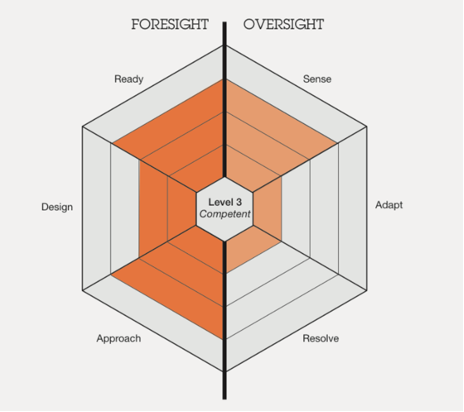Whisky Tango Foxtrot
After winning a tender for a complex project, how to manage the trade-off between time for planning and the need for fast action? Think ADR-SAR.
Back in the day, ‘are ye dancin?’ was how you approached a potential partner. If you heard ‘…are ye askin?’ you hit the dancefloor. In the world of competitive tenders, it’s easy to get started, too. But what should be a contractual tango of give and take soon becomes the slow-slow-quick-quick-slow rhythm of the foxtrot. After the contract is awarded, you’re into a frenetic Charleston. Dealing with the changing pace requires some finesse.
Recently, an offshore drilling client was going through our analysis of his team’s feedback on a recent large, complex contract readiness project which, from a budgetary performance measure, hadn’t performed as expected.
‘Our problem, Mark,’ the executive said, ‘is that we just don’t have the luxury of time to plan these projects.’
The time from contract award to rig mobilization meant planning at pace. Buoyed by the win, the team did their best to cover the details but based some key decisions on unverified assumptions. With hindsight, this optimism was exposed as overconfidence, a bias that permeated their preparations and forecasts.
Any company operating in a competitive market, or with commercial imperative to scale up quickly, faces this quandary. We coined our maxim ‘pragmatic pessimism over energetic optimism’ as a reminder of this tension. Professor Bent Flyvbjerg, renowned mogul of megaprojects, offers a complementary analogy: ‘You want the flight attendant to be an optimist, not the pilot’.
‘You want the flight attendant to be an optimist, not the pilot’
The challenge level of these large projects is increased by the often tightly coupled nature of the undertaking. But what to do when faced with such a scenario?

[image: Extract from ‘Project Horizons’ analysis of team responses during a recent ‘Hindsight’ review workshop]
One option is to start planning the project earlier as part of the tendering process and continue planning until awarded the contract—or not. Another is simply to accept that rushed project planning is riskier and manage senior management’s ROI expectations accordingly. Both options, along with other obvious solutions, come with equally obvious caveats.
However, in our experience, there is one less obvious and often overlooked path. Enhance the project’s organizational capability and resilience.
Sound easy? The dilemma is how to know the level of capability you’ll need. Which is why most companies default to the same team makeup they used before, while expecting a better outcome this time round.
In our book, there are six areas of capability across any project you need to address: Approach, Design, Ready, Sense, Adapt, and Resolve. ADR-SAR for short.

All six underpin organizational capability for a specific undertaking, irrespective of any companywide systems and processes, or tools and techniques you already subscribe to. These merely reflect your corporate project management capabilities (reserves), not what each of your projects might actually need.
So how much do you need? That’s dictated by the variable context of the individual project you are about to embark on—in other words, its challenge level. ADR capability is concerned with planning and preparing, whereas SAR is execution capability. So far, so good. But organizations tend not to have uniform capability profiles or know which of these aspects is leaving your plan vulnerable to value erosion. And if you must plan your project at pace, you need this information quickly, too.
For instance, if you find your project organization lacking any of the ADR capabilities, you should enhance your team’s SAR capabilities to better mitigate inevitable surprises and recover from setbacks during project execution. Because, despite your team’s best efforts, stuff will happen. The trick is to minimize the probability of these events.
And, if you haven’t had adequate time upfront, you should build capability for the ‘during’ period to identify and deal with potentially undesired events early enough to cope with their impacts. As Dr Elmar Kutsch, professor of risk management at Cranfield School of Management, points out with his co-authors in Project Resilience:
‘to be vigilant, to notice beyond the measurable and tangible, one needs free time and resources to look out […] Such activities do not necessarily directly contribute to the execution of the project, they ‘merely’ help you to prepare and ready yourself for something—risk and uncertainty—that may never materialize. Hence, the resourcing of such activities is by no means uncontroversial (especially for budget holders).’
In the dance of project execution, knowing the moves is essential. If you’re ‘askin’, be aware of the dance’s requirements. And if you’re ‘dancin’, ensure your capabilities can keep up with the tempo. Should your project need a good choreographer and dance instructor, get in touch.
________________________________
Can we help you?
Our Foresight and Oversight services are designed to help you deliver project success, even if the process is sometimes uncomfortable.
If you feel your project is stepping over a boundary, try our assessment tool: Project Horizons
________________________________


